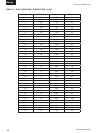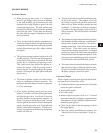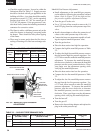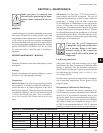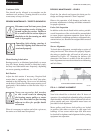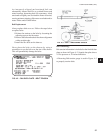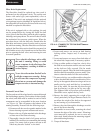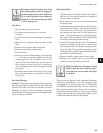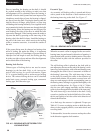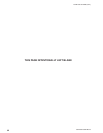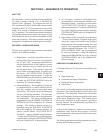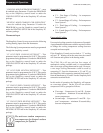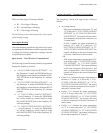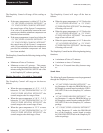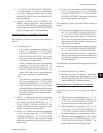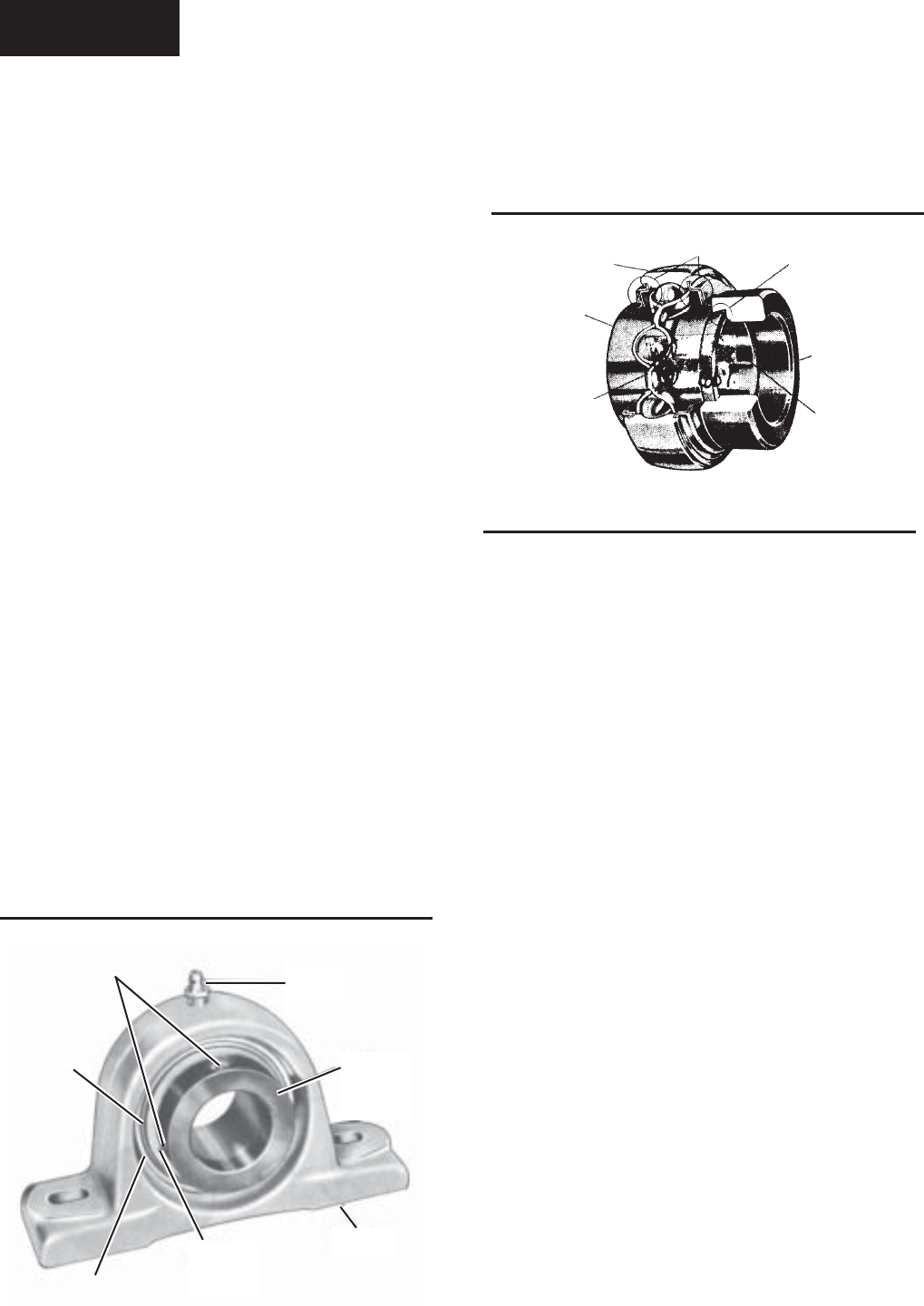
60
Maintenance
JOHNSON CONTROLS
FORM 100.50-NOM6 (1207)
Prior to installing the bearing on the shaft, it should
be worked around in the housing to make sure that
self-alignment will be obtained where the bear ing is
in stalled. After the shaft journal has been in spect ed for
clean li ness, metal chips or burrs, the bearing is slipped,
not forced, onto the shaft. Forc ing the bear ing onto the
shaft by the use of fl ange, pillow block, or outer ring
will dam age the bearing in ter nal ly. Force ap plied in this
way transmits the load to the inner race through the balls
in the bear ing. Since the bearings are not de signed for
axial load ing, the sides of the races in which the balls
turn can be damaged. If the bear ing cannot be made to
slip onto the shaft by press ing on the inner ring of the
bear ing, check the shaft for burrs. In stall the bearing so
the part of the inner race, which receives the locking
collar or contains setscrews, is toward the outside of
the unit.
If the grease fi tting must be changed on bearings that
utilize a locking pin under the fi tting, it is important
to properly replace it. If an adapter or grease fi tting of
im prop er size and length is used, the locking pin may
be either too tight or loose and can affect the alignment
and re-lubrication of the bearing.
Bearing Lock Devices
Various types of locking devices are used to secure
bearing(s) to the fan shaft. Refer to the instructions
packed with bearings for special information. Figure
4-5 is a typical bearing with a setscrew-type locking
de vice. The various locking devices can be clas si fi ed
un der ba sic types: ec cen tric locking type, concentric
lock ing type, and Skwezloc type.
Eccentric Type
An eccentric self-locking collar is turned and driven
with a punch in the direction of shaft rotation to lock
the bear ing inner ring to the shaft. See Figure 4-7.
When the eccentric collar is engaged to the cam on the
bearing inner ring and turned in di rec tion of ro ta tion, it
grips the shaft with a positive binding action. The collar
is then locked in place with the setscrew provided in
the collar.
The self-locking collar is placed on the shaft with its
cam adjacent to the cam on the end of the bear ing’s wide
inner ring. In this position, with collar and bear ing cams
dis en gaged, the col lar’s bore is con cen tric with that of
the bearing’s inner ring. The wide inner ring is loose
on the shaft. By turning the collar in the direction of
normal shaft ro ta tion, the eccentric re cessed cam will
drop over and engage with the cor re spond ing cam on
the bearing inner, causing it to grip the shaft tightly with
a pos i tive binding action. See Fig ure 4-6 & 4-7. Make
sure the two cams engage smoothly and the locking
collar is down fl at against the shoul der of the inner ring.
The wide inner ring is now locked to the shaft. Using
a punch or similar tool in the drilled hole of the collar,
tap the tool lightly to lock the collar in the di rec tion of
nor mal shaft rotation.
As a fi nal step, the setscrew is tightened. Torque per
Table 4-2. It exerts a wedging action to hold the collar
always in the engaged po si tion, even under shock and
reversing loads.
To disassemble, loosen the setscrew and tap the collar
in the direction opposite shaft ro ta tion.
FIG. 4-5 – BEARING WITH SETSCREW TYPE
LOCKING DEVICE
LD06357
00418VIP
Seal
Set
Screws
Lube
Fitting
Lock
Ring
Pillow
Block
Inner
Race
Outer
Race
FIG. 4-6 – BEARING WITH ECCENTRIC CAM
RECESSEDCAMORSELF-
LOCKINGCOLLAR
SELFLOCKINGCOLLAR
CAMORINNERRING
BALLSANDRACEWAY
INNERRING
OUTERRING
SEALASSEMBLY



